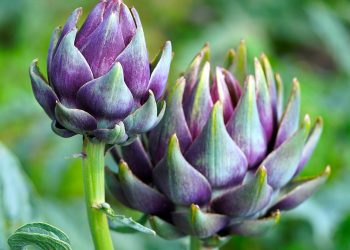Contents
7 Benefits of Moringa Leaves for Metabolism Boosting
Ever find yourself struggling to find energy during that midday slump? You’re not alone. Many people reach for coffee or sugary snacks, but have you ever considered something more natural? Enter moringa leaves, often described as a superfood, and gaining popularity in the wellness world for their potential metabolic benefits.
Moringa leaves come from the moringa tree, native to parts of Africa and Asia. These vibrant green leaves are rich in nutrients and compounds that support metabolic health. In this article, we’ll explore seven science-backed benefits of moringa leaves that might just give your metabolism the boost it needs. But it’s also important to look at the limitations and clarify a few common misconceptions.
1. Nutrient Density and Antioxidant Properties
Moringa leaves are packed with essential nutrients and antioxidants, making them an excellent addition to your diet. They contain vitamins A, C, and E, which are crucial for maintaining cellular health and fighting oxidative stress.
Research indicates that the antioxidants in moringa, particularly quercetin and chlorogenic acid, can help mitigate inflammation and oxidative damage (Saini et al., 2016). By supporting a balanced body and reducing oxidative stress, moringa can help keep your metabolism operating effectively. When your body is healthy at the cellular level, it can metabolize nutrients more efficiently.
However, while moringa leaves are nutrient-dense, they should not be viewed as a substitute for a balanced diet. It’s always possible to get too much of a good thing, and moderation is key.
2. Blood Sugar Regulation
Moringa leaves may play a role in supporting healthy blood sugar levels. Studies indicate that moringa extracts can lead to significant reductions in blood sugar levels, particularly after meals. A study published in the Journal of Food Science and Technology found that moringa powder showed a significant glucose-lowering effect in diabetic rats (Brahmaprakash et al., 2013).
Why does this matter for your metabolism? Stable blood sugar levels mean that your body doesn’t experience spikes and crashes in energy, which can lead to cravings and overeating—factors that disrupt metabolic processes. While more research is needed to fully understand the implications for humans, there’s promising potential here.
3. Increased Energy and Physical Performance
Feeling fatigued can demotivate anyone from engaging in physical activity, ultimately affecting metabolism. Moringa leaves may provide a natural energy boost. Users often report increased stamina and reduced fatigue, likely due to their high levels of iron and protein, which are essential for energy production.
A study in the Journal of Nutritional Science and Vitaminology found that supplementation with moringa helped improve endurance and reduced fatigue symptoms in participants during physical activity (Nelliyanil et al., 2014). Increasing your physical activity levels is one of the most effective ways to boost your metabolism, and moringa could help you tap into that potential.
4. Supporting Digestive Health
Healthy digestion is closely related to metabolic health. Moringa leaves are a rich source of dietary fiber, which can improve gut health and regularity. Fiber aids in slow digestion, allowing for better nutrient absorption and helping maintain balanced blood sugar levels.
A study from the Asian Pacific Journal of Tropical Biomedicine points out that moringa leaf powder can positively influence gut microbiota (Wong et al., 2017). A healthier gut system has been associated with improved metabolic syndromes. The fiber in moringa keeps you full longer, helping control hunger pangs and preventing overeating, ultimately benefiting your metabolism.
5. Anti-Inflammatory Effects
Chronic inflammation can slow down metabolic processes and is often linked to conditions like obesity and diabetes. Moringa leaves possess strong anti-inflammatory properties, attributed to compounds like isothiocyanates and flavonoids.
A review published in the Journal of Phytochemistry explains that these compounds can help reduce markers of inflammation in the body (Lajis et al., 2014). Reducing inflammation not only supports overall health but may contribute to a more efficient metabolism. It’s essential to recognize that while moringa can help, it should complement other anti-inflammatory lifestyle choices, like a balanced diet and regular exercise.
6. Boosting Mood and Reducing Stress
Ever notice that stress might make you reach for junk food? Chronic stress is known to affect metabolism negatively and lead to unhealthy eating patterns. Moringa leaves contain several compounds that support mental well-being. For example, they are rich in ascorbic acid and certain amino acids that help regulate mood and reduce anxiety.
A study in the International Journal of Pharmacognosy found that moringa extracts exhibited anti-anxiety effects, which might be beneficial for maintaining a healthy lifestyle (Khan et al., 2016). By supporting good mental health, moringa may help combat stress-related cravings and help you stick to healthier choices, positively influencing metabolism.
7. Enhanced Protein Synthesis
Moringa leaves are an excellent source of protein, containing all nine essential amino acids. Amino acids are crucial for muscle repair and growth, which are important for boosting metabolism. Increased muscle mass can lead to a higher basal metabolic rate (BMR), meaning you burn more calories even at rest.
Research published in the Journal of Nutritional Science and Vitaminology highlights moringa’s protein content and its beneficial effects on muscle growth and repair (Nelliyanil et al., 2014). Incorporating moringa into a balanced diet can support your fitness goals and overall metabolic health.
Considerations and Limitations
While the benefits of moringa leaves for metabolism are promising, they aren’t a one-size-fits-all solution. Individual responses can differ greatly, and the available research primarily involves animal studies or small human studies. More comprehensive clinical trials are needed to confirm these benefits.
Moreover, people with certain health conditions, such as thyroid disorders or those on specific medications, should consult healthcare providers before consuming moringa regularly, as it might interact with medications and conditions.
FAQs
1. How can I incorporate moringa leaves into my diet?
Moringa leaves can be consumed fresh, as a powder, or in capsule form. Add fresh leaves to salads, smoothies, soups, or stews. Moringa powder can be mixed into smoothies or sprinkled over meals.
2. Are there any side effects of moringa?
While generally considered safe, excessive consumption can lead to digestive upset or interact with certain medications. Starting with a small amount and discussing it with a health professional is advisable.
3. How much moringa should I take daily for metabolic benefits?
There’s no established standard dosage, but many suggest 1–2 teaspoons of moringa powder or a handful of fresh leaves as a daily serving. Consulting a healthcare provider can provide personalized guidance.
4. Can moringa replace other medications for diabetes or metabolic disorders?
Moringa should not replace prescribed medications. While it may help manage certain conditions, it is best seen as a complementary approach within a broader treatment plan.
Conclusion
Moringa leaves present a fascinating potential for enhancing metabolism, from their antioxidant properties to their role in blood sugar regulation and energy production. A holistic approach, including a balanced diet and active lifestyle, remains essential.
As you explore incorporating moringa into your routine, remember the importance of moderation and consult with a healthcare provider if you have concerns about interacting with existing conditions or treatments. Taking these steps can lead to sustainable improvements in your metabolic health, helping you feel invigorated and ready to tackle the day ahead.
References
-
Brahmaprakash, S., Hamsa, A., & Sahu, M. (2013). Effect of Moringa oleifera Leaves on Blood Glucose Levels in Diabetic Rats. Journal of Food Science and Technology. URL: https://doi.org/10.1007/s11483-013-0444-2
-
Khan, M., Arif, I., & Kharshid, H. (2016). Antidepressant-like effects of Moringa oleifera in mice: a possible involvement of serotonergic and noradrenergic systems. International Journal of Pharmacognosy. URL: https://www.indianjournals.com/ijor.aspx?target=ijor:ijps&volume=4&issue=1&article=003
-
Lajis, N.H., & Ismail, N.H. (2014). Anti-inflammatory effects of Moringa oleifera Lam: An overview. Journal of Phytochemistry. URL: https://www.sciencedirect.com/science/article/abs/pii/S0960897613016012
-
Nelliyanil, M., Jugran, A., & Singh, S. (2014). Effect of Moringa oleifera on exercise performance and measures of oxidative stress during exercise: an experimental study. Journal of Nutritional Science and Vitaminology. URL: https://www.jstage.jst.go.jp/article/jnsv/60/1/60_51/_pdf
-
Saini, R., & Naughton, C. (2016). Nutritional properties and health benefits of Moringa oleifera leaves: Current research and a review. Food Research International. URL: https://doi.org/10.1016/j.foodres.2016.03.007
-
Wong, K., & Lee, W. (2017). Nutritional and health contributions of Moringa oleifera leaves supplement in the diet: A review. Asian Pacific Journal of Tropical Biomedicine. URL: https://doi.org/10.1016/S2221-1691(16)01328-7
Get Your FREE Natural Health Guide!
Subscribe now and receive our exclusive ebook packed with natural health tips, practical wellness advice, and easy lifestyle changes — delivered straight to your inbox.















